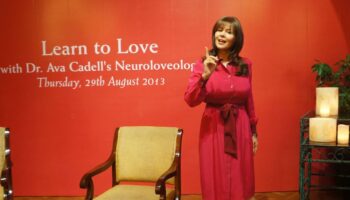The O-Shot, short for Orgasm Shot or Orchid Shot, is the common name for a non-surgical platelet-rich plasma (PRP) treatment that may increase the frequency and quality of orgasms. Clinics offerings this treatment inject the PRP solution into their client’s clitoris, labia and G-spot.
The O-Shot contains PRP from a client’s own blood. PRP contains bioactive molecules known as growth factors that promote healing. During PRP therapies, the clinic draws blood from a patient or client and isolates the PRP. They then inject the isolated PRP into the part of the body that needs healing. PRP has shown promising results for a number of other medical applications.
The term platelet-rich plasma was first used by CS Kingsley. In 1954, he wrote about the platelet concentration required for the transfusions of patients with thrombocytopenia, a condition that lowers platelet count. The first PRP blood bank was established during the 1960s. In the 1980s, doctors confirmed that growth factors released by platelets could repair damaged human tissue.
As the evidence behind PRP grew, so did its applications. In 1972, platelets were first used to regulate blood during surgery. Just three years later, scientists used PRP in reconstructive treatments. By 1987, a surgeon used PRP during heart surgery to reduce blood loss and the risk of blood disorders. Today, PRP is commonly used to help injured athletes return to competition sooner. Doctors claim these treatments can help repair muscles and broken bones more quickly than traditional therapies. PRP treatments have also helped people recover from surgery and regrow their hair.
Who invented the O-Shot?
The O-Shot was invented by Dr. Charles Runels. The Alabama doctor of internal medicine had previously developed what he called the "Vampire Facelift," which involved injecting PRP taken from a client’s arm into their face. The results he saw inspired him to consider further applications for PRP. He reportedly began injecting his own penis and felt it gave him stronger erections. He gave the first O-Shot to his partner, who asked for the procedure to get more enjoyment from their sexual encounters. After noting her satisfaction, he decided to offer the procedure to his patients.
Does the O-Shot work?
The O-Shot is marketed at women experiencing sexual dysfunction, including people who struggle to have orgasms, who have lost vaginal sensitivity and who have a low libido. Supporters of the O-Shot say that it works by stimulating stem cells and blood vessels, boosting collagen production, and creating new blood vessels and nerves which rejuvenate the genitals. With blood flowing and new nerves tingling, they say the O-Shot can help people improve their sexual function and pleasure. They claim it may:
- increase sexual desire
- increase arousal
- increase lubrication
- lead to better orgasms.
There may also be some non-sexual benefits, including reducing incontinence, and treating chronic pain triggered by childbirth, the application of transvaginal mesh, or interstitial cystitis. It may also help treat genital skin conditions including lichen sclerosus and lichen planus.
The O-Shot also has its critics, with most arguing that without more large-scale peer-reviewed studies, it’s impossible to say whether this treatment can reliably get the results it promises. They argue that without this evidence, clinics promoting the O-Shot and its purported benefits may be misleading their clients. This is especially true for clinics claiming the O-Shot is backed by “medical science." While there are several studies that support the use of PRP in other medical contexts, there is no medical science supporting the use of the O-Shot for increased sexual satisfaction.
Some critics have also questioned Dr. Runels' credentials and methods. They note that as a doctor of internal medicine, he is likely to have very limited knowledge of gynecology. They also question the ethics of performing an experimental procedure on a sexual partner. Once someone receives a procedure, they become a patient, and the AMA Code of Medical Ethics states it is unethical for physicians to have romantic or sexual interactions with their patients. Dr. Runels was disqualified by the Food and Drug Administration as a clinical investigator in 2009 and, in regards to a separate incident, fined by the State Board of Medical Examiners of Alabama the same year for misuse of hormone replacement therapy, although restrictions on his license were later overturned.
More About O-Shot
At the time of writing, there is no scientifically proven evidence that the O-Shot can improve a user’s sex life. There are also no studies examining the effect of injecting PRP into the vaginal tissue of animals. In 2014, Dr. Runels published a report after asking 11 patients how they felt about the procedure. He noted that 71 percent of the women went from “distressed” to “not distressed” after the O-Shot. This study was small and not peer-reviewed.
Another small study published in 2023 assessed people experiencing sexual dysfunction after female genital mutilation. The subjects reported greater levels of arousal, lubrication and sexual pleasure, including easier access and stimulation of their clitoris. However, it's unclear whether people with intact genitals, or even a larger study group, would see similar results.
However, anecdotal evidence suggests the O-Shot may be effective for some people. More comprehensive, rigorous studies may confirm whether the O-Shot consistently achieves its intended results.
How to Get the O-Shot
People interested in an O-Shot can receive one by scheduling an appointment with a clinic advertising the treatment. A doctor, such as a gynecologist or urologist, may recommend a provider. Alternatively, people interested in the O-Shot may find a clinic that provides this treatment online.
Dr. Suzanne Manzi, a four-time board-certified MD and certified provider of the O-Shot, recommends people interested in this treatment look for credible clinics that are honest and balanced in their advice.
"Ensuring clients have a comprehensive understanding of any treatment is a foundational pillar of ethical medical practice. This is particularly important in sexual health, an area prone to misinterpretations and heavily influenced by personal and societal beliefs. Clinics should therefore be cautious in managing expectations and avoid over-promising results, given the present lack of robust evidence surrounding the O-Shot," she said. "Medical professionals should strive to provide balanced information, emphasizing both the potential upsides along with the reality of limited scientific endorsement and potential downsides. This is indispensable in fostering informed patient decisions, autonomous choices, and consequently, more satisfactory health outcomes. The focus should always be centered around 'patient empowerment,' even when navigating the relatively unknown terrains like the O-Shot."
Ethical clinicians ask new clients about their health, including their sexual health. This screening ensures the client doesn't have a condition that may make the O-Shot unsafe for them, such as hepatitis C, HIV, or blood cancer. Once they feel satisfied the client is in good health, they’ll ask them to remove their underwear and prepare the injection site with numbing cream. They then draw the client’s blood and use a centrifuge to separate the plasma from the platelets. Finally, they administer a local anesthetic before the O-Shot. The whole process takes around 30 minutes.
After an O-Shot, there may be some side effects, including:
- heightened and prolonged arousal, including while urinating
- squirting with orgasm
- spontaneous orgasms
- allergic reactions
- bruising, numbness, redness, swelling, or pain at the injection site
- dermatitis
- infections
- scarring
- vaginal sensitivity
Some vaginal sensitivity is common after the O-Shot but usually settles down after a day or two. Some people even report feeling ready to have sex on the same day they receive the O-Shot. People who notice any serious side effects, like fever, bleeding, pus, reduced vision, or severe redness or swelling, should contact the clinic immediately.
The injection itself may cause heightened vaginal sensations within the first three to seven days. After around three weeks, new tissue may start to grow around the injection site. This may continue for the next nine weeks, peaking around the three-month mark. The results of the O-Shot may last around 12 to 18 months, after which some people may decide to get another injection.
The O-Shot is not approved by the FDA or covered under health insurance, so anyone who receives it pays for the full treatment out of pocket. Prices typically range from $1,200 to $2,500.


